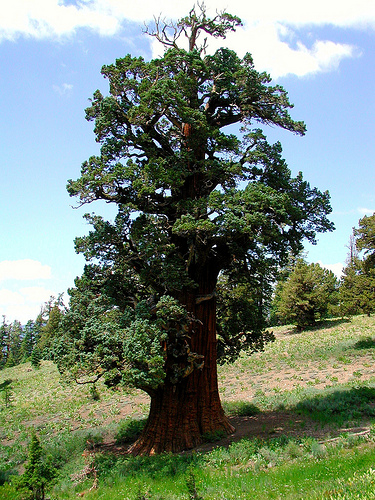By Katrina Marland
Later this month, we have something special in store for you: The spring edition of our National Register of Big Trees will be released on April 27th! In anticipation, we’ll be talking about big trees every Friday until the release of the new register. It showcases each of the biggest trees — we call them champions — of native and naturalized species in the U.S. People from all walks of life — foresters, hikers, arborists, teachers, gardeners and more — contribute to this list through our National Big Tree Program, which has been celebrating trees of all sizes since 1940. Since that first year when the call came to find and protect the biggest trees in America, the program has grown to include coordinators, hunters and champions in all 50 states.
We are proud of our program’s 72 years of history, but some of our champions go back a great deal further than that. Just to give you an idea of how impressive our champion trees really are, let’s take a look at those who have held the crown since the very beginning.
Giant Sequoia
This champion tree goes by the name General Sherman, after the famous Civil War general William Tecumseh Sherman. It is estimated to be one of the largest living trees in the world by volume, and scientists put its age between 2,300 and 2,700 years, making it one of the oldest known trees as well. Its astonishing size — more than 100 feet around and about 275 feet tall — makes it the prime attraction in its home at California’s Sequoia National Park. It should be no surprise that when we started seeking the biggest trees in 1940, General Sherman made the list, and he hasn’t left it since — although some competitors have sure given him a run for his money.
Rocky Mountain Juniper
At first glance, it might be hard to tell if this champion tree is still among the living. It is twisted and gnarled and has only a small patch of green at its crown to hint at life. But for being about 1,500 years old, Jardine Juniper — named for U.S. Secretary of Agriculture William Marion Jardine — looks pretty good to us. You can find it at the top of a peak in the Logan Canyon area of Utah’s Cache National Forest. It’s quite a hike to see this Rocky Mountain juniper, but once you make it up the trail to the viewing platform, you can tell that the tree you’re looking at is one heck of a survivor — and a national champion to boot.
Western Juniper
This tree is another Californian, located in Stanislaus National Forest, and at more than 40 feet around and 78 feet tall, it is the largest western juniper in the United States. It has gnarled branches, shrubby leaves and beautiful red bark and goes by the name of Bennett Juniper, after naturalist Clarence Bennett. Estimates of its age vary from as old as 6,000 years to as “young” as 1,000 years. Either way, we’re pretty sure this champion tree has more birthday candles to its credit than most trees you’ll see in a lifetime.
These are just three of hundreds of remarkable national champion trees that will be featured in the National Register later this month. Check back every Friday in April for more updates and cool facts about the National Big Tree Program.

